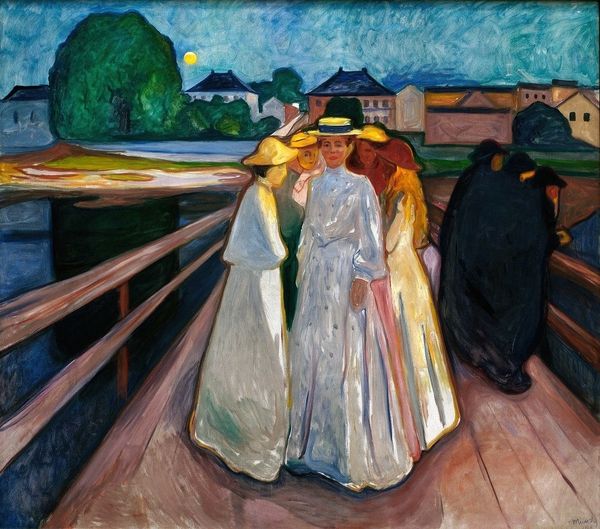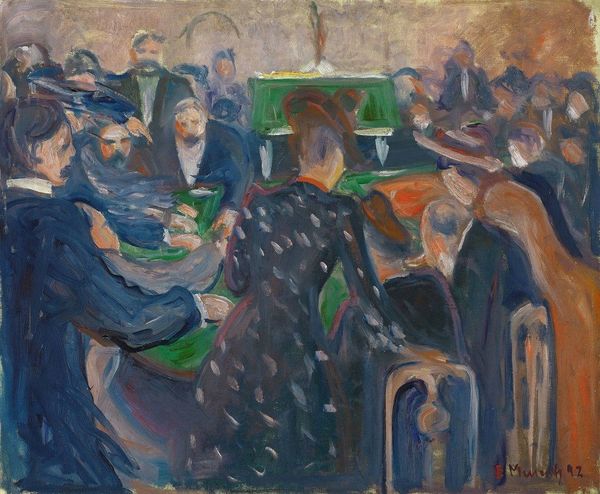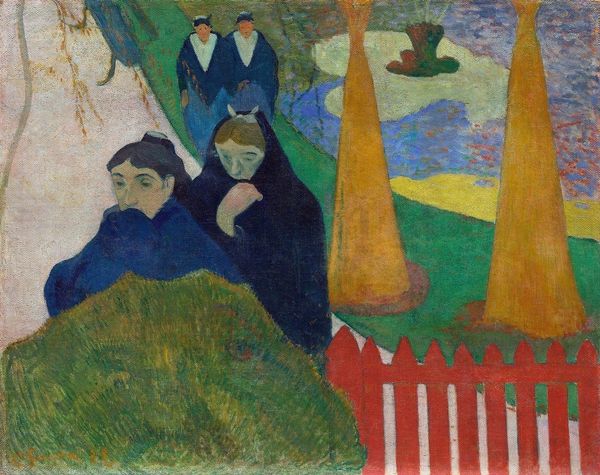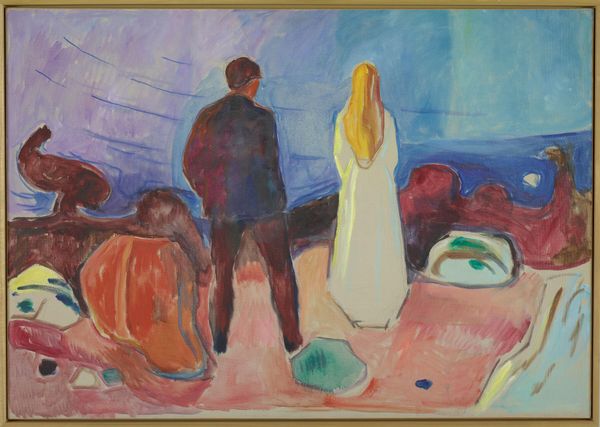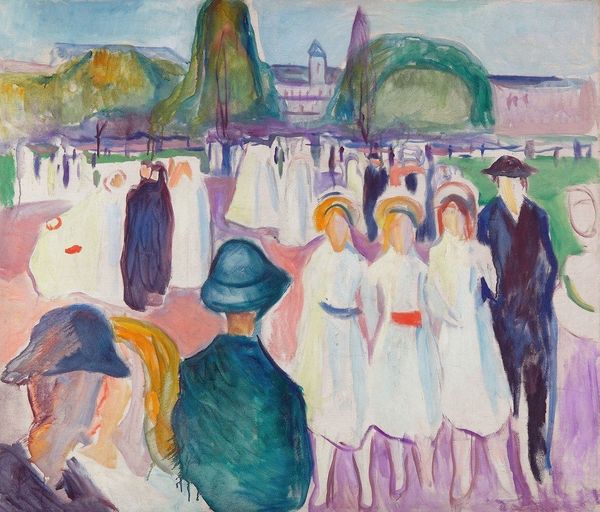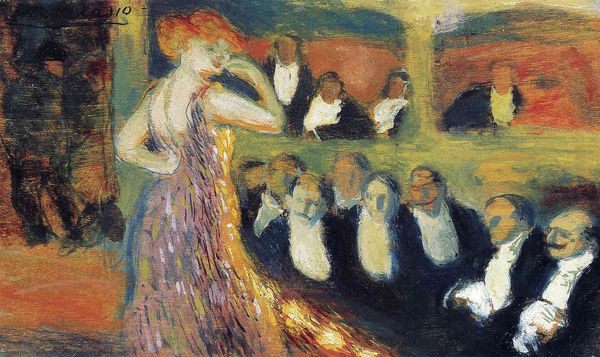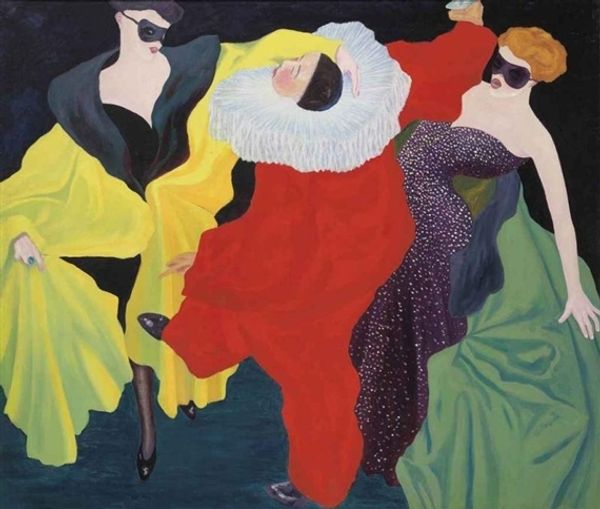
painting, oil-paint
#
figurative
#
painting
#
oil-paint
#
oil painting
#
symbolism
#
genre-painting
#
post-impressionism
#
portrait art
Copyright: Public Domain: Artvee
Editor: So, here we have Edvard Munch’s “The Dance of Life,” painted between 1899 and 1900, using oil paint. The colors feel a bit muted, almost dreamlike, and there's a clear contrast between the couples dancing in the center and the more solitary figures on the sides. What do you see in this piece? Curator: This painting really speaks to the role of art as a public forum for discussing complex emotions and societal anxieties. Munch is using the motif of the dance to explore themes of love, desire, and the passage of time within a cultural context grappling with changing social norms. Consider the period: fin de siècle Europe, anxieties around modernity were really taking hold. How does Munch visualize these tensions in this work? Editor: I guess I see the couples in the center as representing love and passion, but the women on either side seem almost mournful. Is Munch using their isolation to show society’s judgment on female sexuality? Curator: Precisely! He places female figures at the edges to frame this "dance of life". Note that the female figures at the edges of the painting function almost like chaperones. Consider the color and style of the dresses worn by all the dancers: how does this choice of style define them? What are your feelings on how museums' presentations might affect a modern understanding of social mores? Editor: It feels like he's illustrating both the joy and the pain of relationships. Maybe that institutions need to provide context to art when presenting it, rather than dictate it to people, so they can explore themes within them! Curator: An important concept! The power of visual storytelling can shift in ways not intended or imagined. Today, that's why it’s important for audiences to understand the art as a product and reaction of its social environment, which in turn will broaden our understanding. Editor: Thanks! I’ve never really thought about a museum’s responsibility like that.
Comments
No comments
Be the first to comment and join the conversation on the ultimate creative platform.
